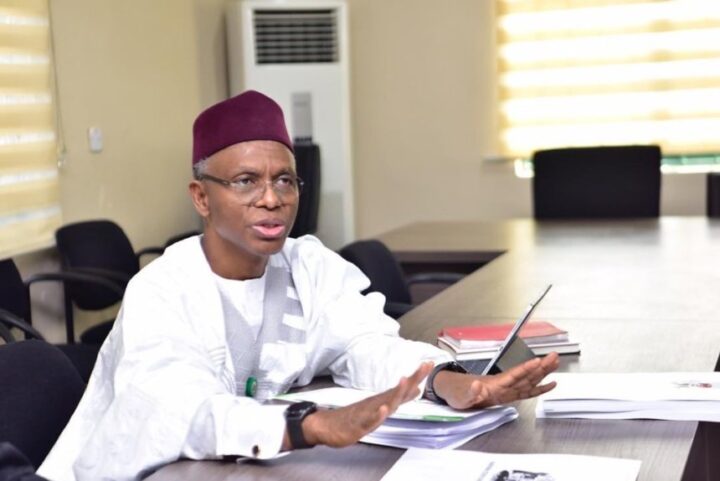Dong health centre runs on this kerosene lantern
On December 5, 2017, Vice-President Yemi Osinbajo visited Dong, Demsa local government area of Adamawa state, a day after it was attacked by suspected herdsmen. The community had high hopes that not only would the damaged properties be restored, their lives would change for the better. They desired a good access road and other basic amenities.
For them, nothing could be more assuring seeing the country’s number two man right in the heart of the community, sharing in their plights and pains, and most importantly, promising to fix things.
The first thing Osinbajo told them was how the government “can compensate the loss and take immediate steps and make sure that NEMA immediately supplies relief materials and also restore some things [to] where they were before the destruction and that is the reason the president has sent me here”.
Almost three years after, the drive to Dong is still through ridgy paths along farmlands. Any motorist would think twice before embarking on the journey.
Advertisement
‘THE GOVERNMENT HAS DONE NOTHING’
Their hopes, if not dashed, are already fading and the villagers are giving up.
“Government has done nothing,” began Justin Mafiri, one of the village elders.
Advertisement
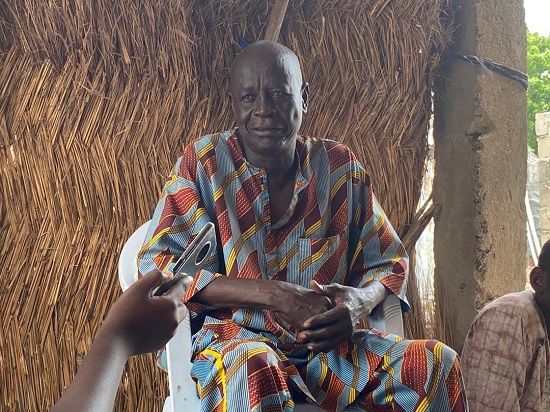
“Osinbajo came here, he promised us heaven on earth, and since he left, nothing has come to us. I’m reconstructing my own house by myself, nothing came from his office. Osinbajo and I spoke that day and he promised us that when he goes back to Abuja, he will send things to us, he will rebuild all our destroyed houses, but till now nothing.
“We wouldn’t have put our minds on these things if the vice-president didn’t make the promise. He saw all the problems, even the ones that weren’t from the attack, at least he saw the deplorable road condition. We thought he would use his office and get these things done.”
Mafiri explained that Dong is accessible only during the dry season and any motorist who attempts the journey when it rains would have himself to blame. For years, the community had suffered flooding and the residents who are mostly farmers have lost livestock and farm produce worth millions of naira.
Advertisement
“There used to be this old road, but the road was destroyed after one heavy flooding many years ago,” he said.
“The most affected are farmers whose farms are washed off. It is always devastating. We can say Dong has been abandoned. Every year we cry to the government about the flooding, but it seems they’ve now turned a deaf ear.”
The community, Mafiri said, had existed as long as Nigeria was birthed, and each government had always promised them but none had implemented a thing.
Dong boasts of a “Sunday market” where traders come from as far as Lagos, but the market could make more sales should the community get a good road.
Advertisement
It was not until six months ago that the Food and Agriculture Organization (FAO), an agency of the United Nations, completed a water project in the village. Getting water had also been a difficult task. Although the new project is yet to be inaugurated, Mafiri said the villagers couldn’t wait and had already started making use of it.
“It is solving our water problem and it’s the only major source of water right now,” he said, adding that villagers had sourced water from wells before now.
Advertisement
UNINSTALLED TRANSFORMER NOW RUSTING
Still trying to recover from the 2017 attack, Shadrack Anya, the village head whose palace was destroyed, wishes he could get Osinbajo’s attention again and remind him of the promises he made.
Advertisement
Anya lost everything, and when nothing was forthcoming from the promises, a non-governmental organisation recently offered to rebuild his place.
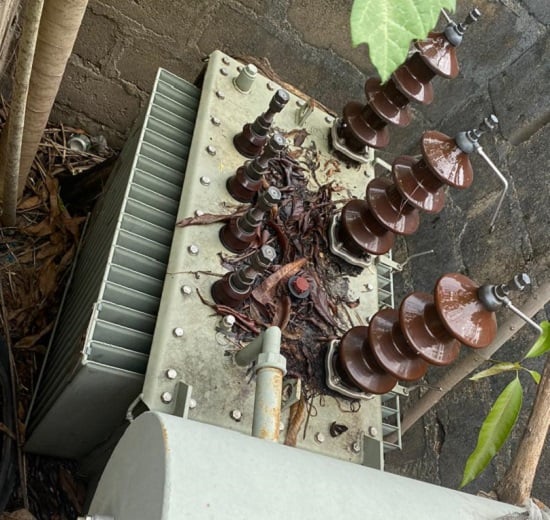
“The vice-president was inside my palace,” Anya said, pointing at the wreckage behind him.
Advertisement
“I told him I am a displaced person, and he told me it would not take more than two weeks and we will see the government’s assistance.”
At one corner around the palace is a transformer Anya said was given to the community about ten years ago but was never installed.
“You should know how happy we were then when they brought this transformer for us,” he said.
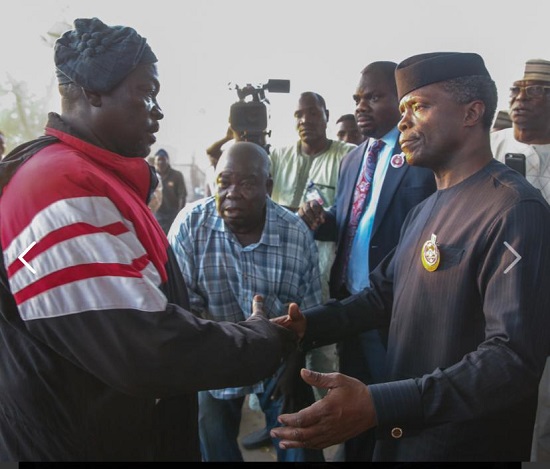
“Small scale business owners who rely on generators were so happy that at last, electricity was coming to Dong, but the community is still in darkness.”
The village head is unsure if the transformer could still work as a better part of it is now rusting away.
‘WE NEED MORE CLASSROOMS’
Begging for an urgent intervention is the over 50-year-old Dong Central Primary school serving about 3,000 pupils in the primary to the senior secondary classes.
Fabian Alehis, the junior secondary school section master, told TheCable that they had to divide the pupils into morning and evening groups because there are not enough classrooms to take them all at once.
The problem was being solved when the school got new blocks of classrooms built somewhere at the entrance of the community, but were later handed to soldiers deployed to watch over the village since the 2017 attack.

“The newly built classrooms are where the soldiers now sleep and use as camp, and we’ve been unable to move senior secondary school students there,” Alehis said.
“If schools are in session, you would see students hanging in the window, because there’s no space. In fact, we’ve had to convert the staff room meant for teachers into a classroom.
“Now our urgent needs in this school are structures. We need more structures, more classrooms, chairs and desks. This is our major and immediate problem.”
A block was recently donated to the school by the Partners West Africa Nigeria(PWAN), but there is still a need for more classrooms. The community had started constructing a block for the school, but the project stopped for lack of funds.

“This is seriously affecting the children, because they get easily discouraged when they come to school and there’s no classroom to sit and learn,” Alehis said.
TheCable had reported the efforts of some NGOs helping with reconstruction and giving a second chance to some of the children displaced by the 2017 attack.
HEALTH CENTRE RUNS ON KEROSENE LANTERN
With “open 24 hours” written on the signboard by the health centre in Dong, it is interesting that most of the hours are run using kerosene lanterns.

Although the centre has a generator, workers who spoke with TheCable said the generator is rarely fuelled.
“So, most of the time, we are on this economical lantern,” one of the workers said.
The centre, serving about five neighbouring villages, offers services that include child delivery.
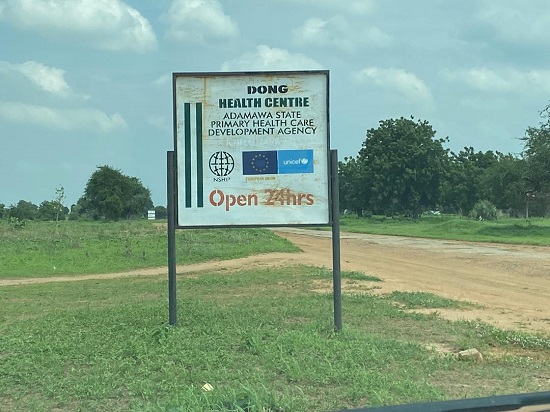
“The times we might want to put on the generator is if we are taking child delivery at night,” the worker added.
‘WE NEED HELP’
Like in Dong, the experience is the same with Kikan, a community in Numan local government area of Adamawa.
The village, too, had not received any help since it suffered an attack in 2017.
Nanza Henry, the village head, called for help on the challenges with his community, saying they might have to “leave everything to God in the end”.
“The development I will say we ever got is the health centre and it came just 2019,” Henry said.
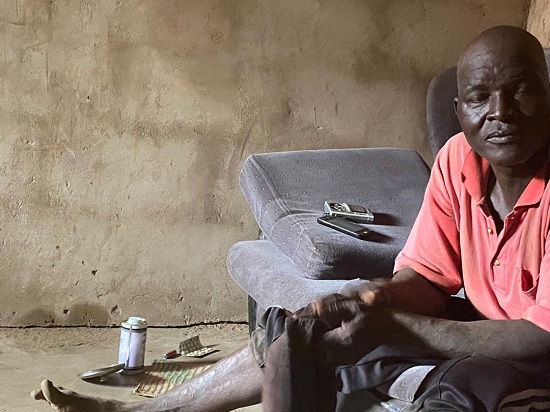
“And then, they only put up the building… there is no equipment there, as we are still using the old health centre facility.
About the school in the community, Henry said the problem is that “we don’t have teachers”.
“We’ve complained about a lack of teachers for like five times and nothing yet,” he said.
He also touched on electricity and road, saying the community has never been considered.

“There was no time when some people came here, they said they were from the government to come and carry out a survey for a road project. We never saw them return.
“Last two years, again some people came here and said they were from the World Bank, that they wanted to fix the road and we even saw the caterpillar they brought. They are yet to come back.
“Walk around this community, you won’t find a single pole for electricity. I don’t know what a transformer is, our children don’t.”
The village head said the water project in the community came from a group of women in Yola, the state capital.
N39. 92BN GRANT FOR HEALTH, EROSION…
In 2019 alone, Adamawa state received N39.92 billion in grants and donations from federal government and foreign agencies.
Among other things, the grant was meant to cover healthcare, education and also address flooding issues in some parts of the state.

In the budget document seen by TheCable, a breakdown of the grant showed the state got N500 million as emergency relief fund from the federal government; N120 million from the Victim Support Fund (VSF); N11 billion for multi-sectoral crisis recovery project; and N1 Billion for erosion and watershed management project.
Government officials in the state who pleaded anonymity told TheCable Dong and Kikan communities were expected to be priority beneficiaries of the grant, and it is not clear why no significant change has been made.
“After the 2017 attack, those communities became a priority but we don’t know why some of these things are yet to be fixed,” one of them said.
‘WE ARE CURRENTLY BUILDING ROADS ACROSS 200 COMMUNITIES’
Humwashi Wolosikou, chief press secretary to Ahmadu Fintiri, governor of the state, told TheCable that the government is currently constructing about 200 roads across rural communities in the state.
He said the 2017 attack on the communities was part of the challenges inherited from the previous administration.
“We have embarked on rural roads that the state government is currently providing to almost about 200 communities across the state and then there are also electricity projects that are ongoing in some local government areas,” he said.
“I do know that Dong has electricity: they have electricity because I remember when Grace Bent was senator, she gave them electricity and then influenced power supply to that place.
“For Kikan, I know it’s also part of the rural communities, but you know we can carry out these things at once across the 21 local government areas.
“The government is doing these things in phases, so those that are lucky are enjoying what’s happening from the first phase of the project.”
Wolosikou, however, couldn’t confirm if Dong and Kikan are on the list of the 200 communities to benefiting from the first phase of the project.
‘OSINBAJO’S VISIT HAD AN IMPACT’
Laolu Akande, a spokesperson to the vice-president, said his principal’s visit after the attack had made an impact.
He said following Osinabjo’s visit, several food items and relief materials were distributed to all the affected communities in the state.
“The vice-president’s visit was part of what inspired the National Livestock Transformation plan where the federal government and states are collaborating to sort out the issues,” he told TheCable.
Add a comment






